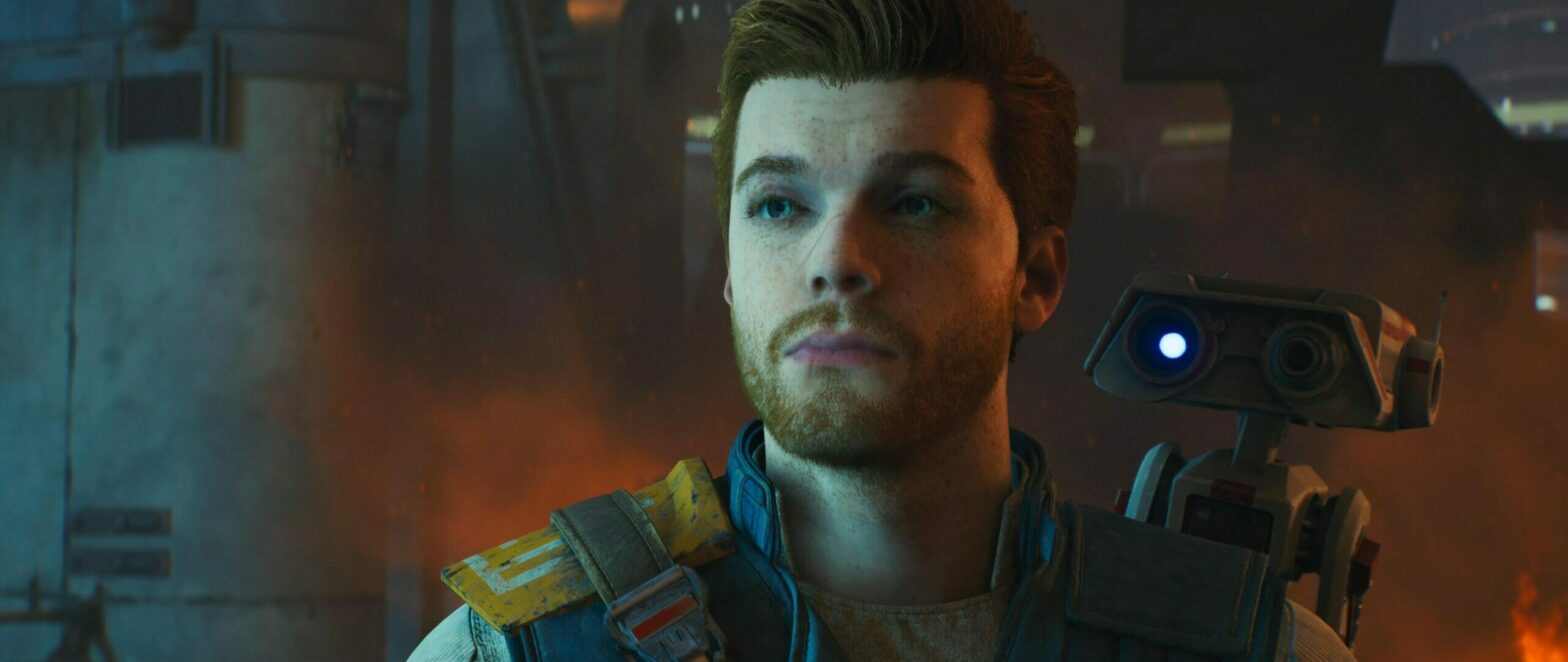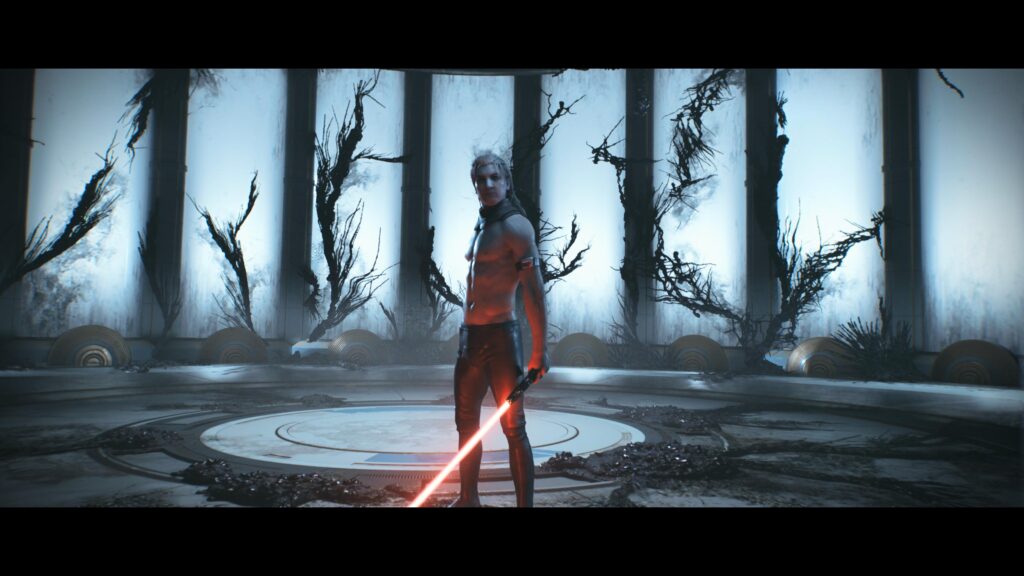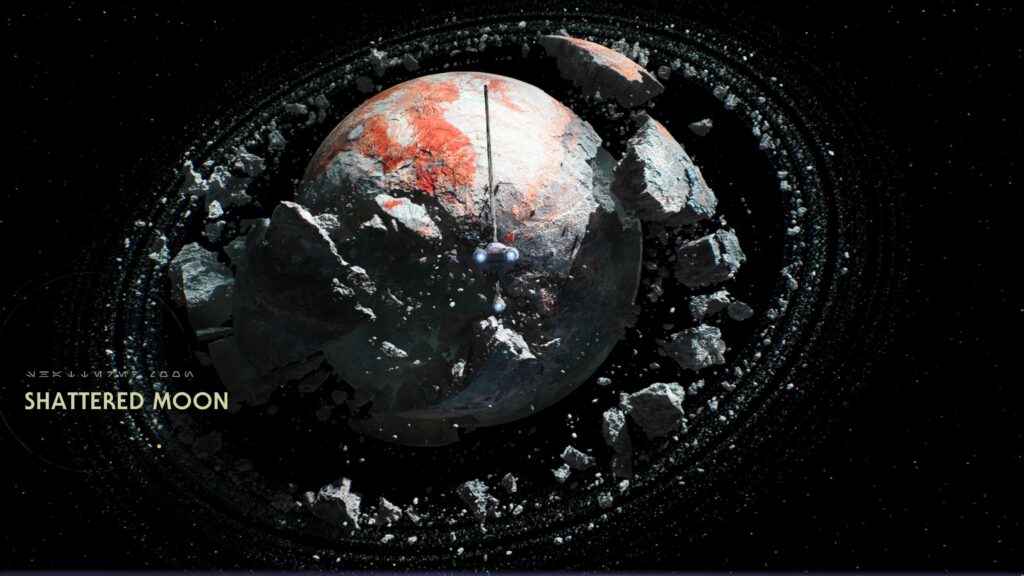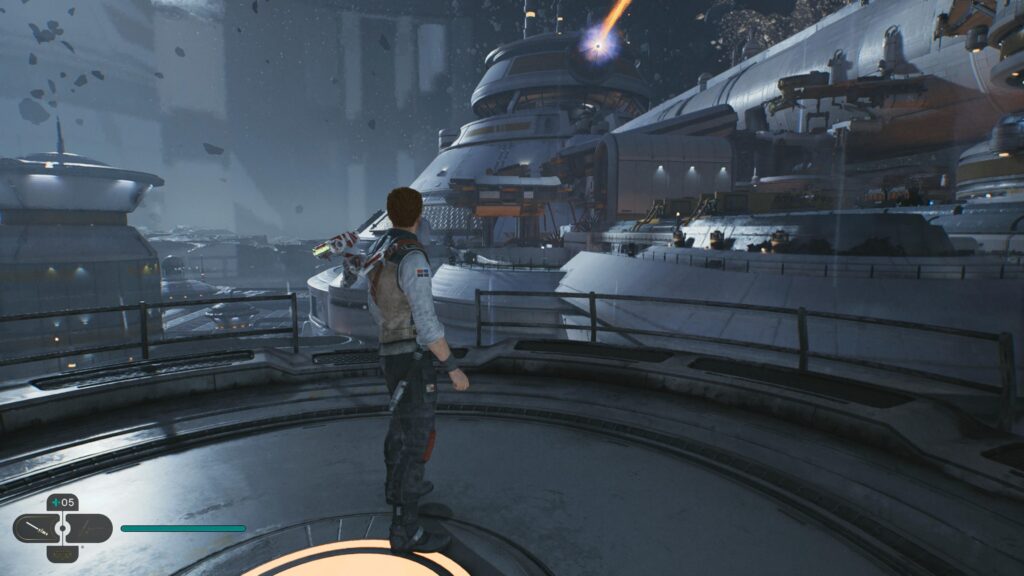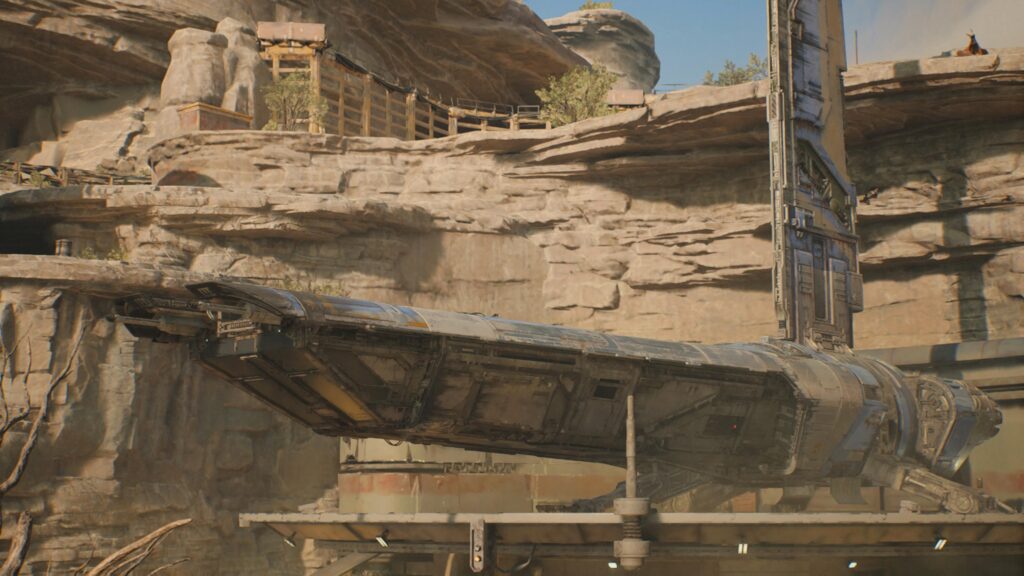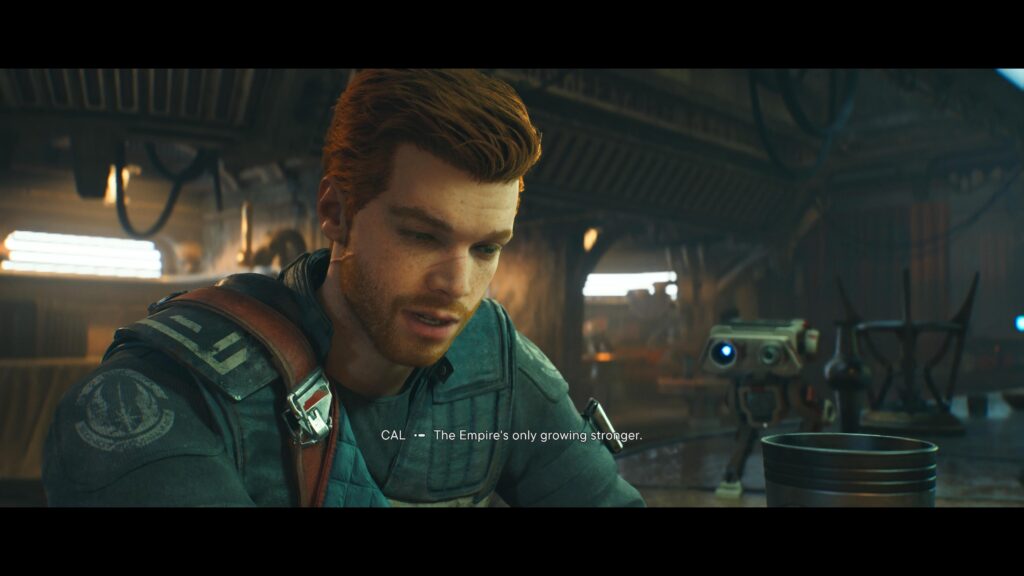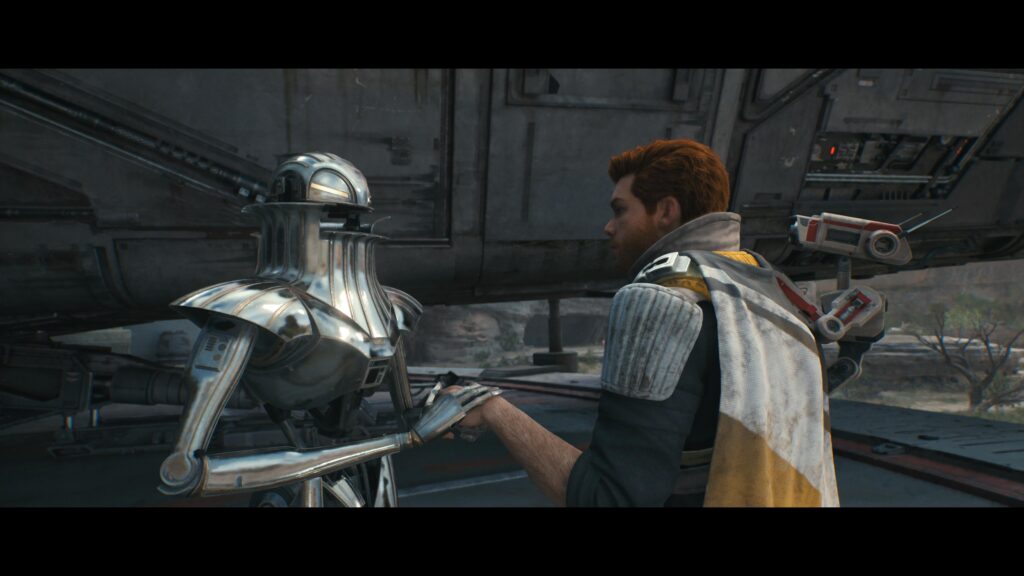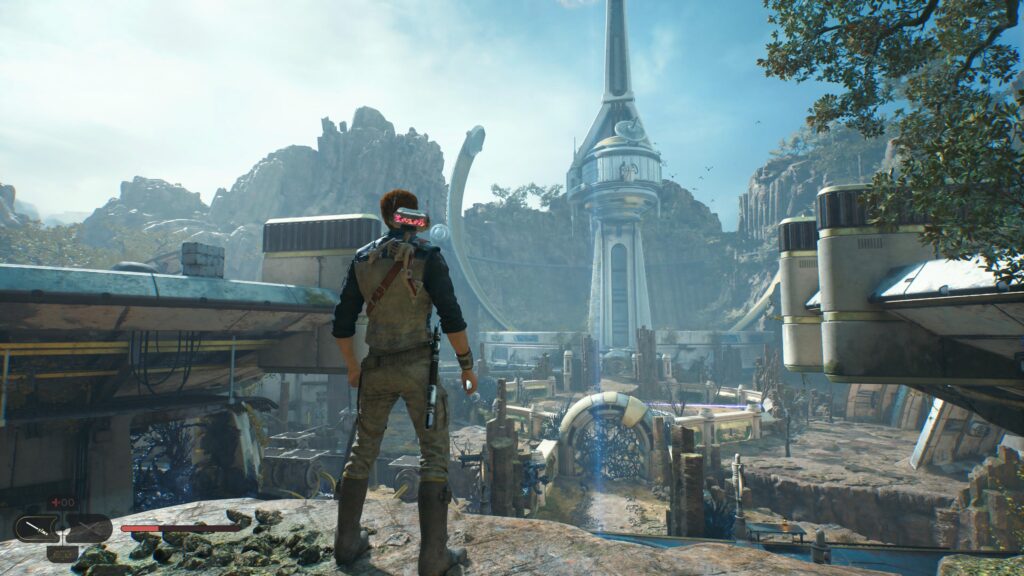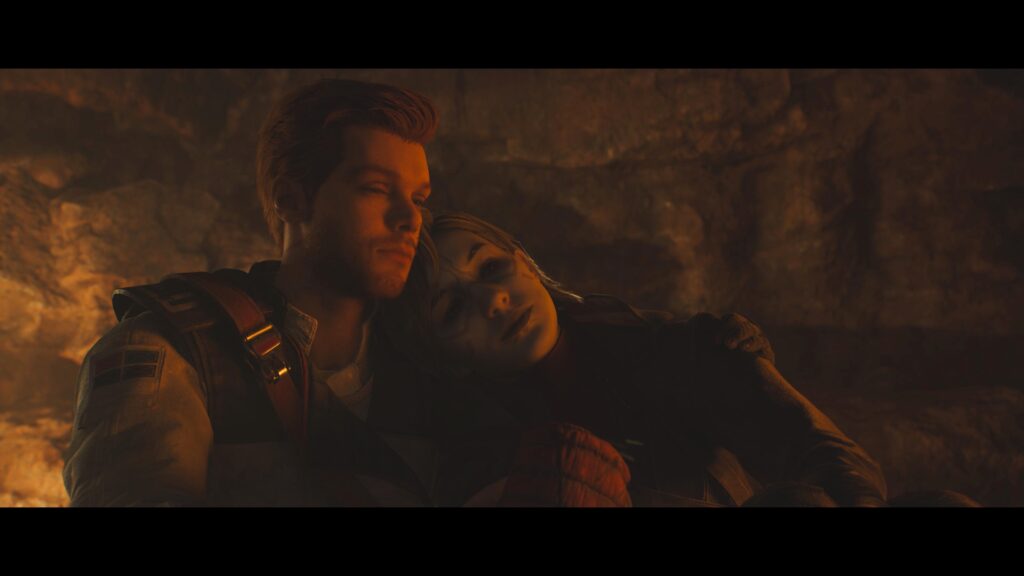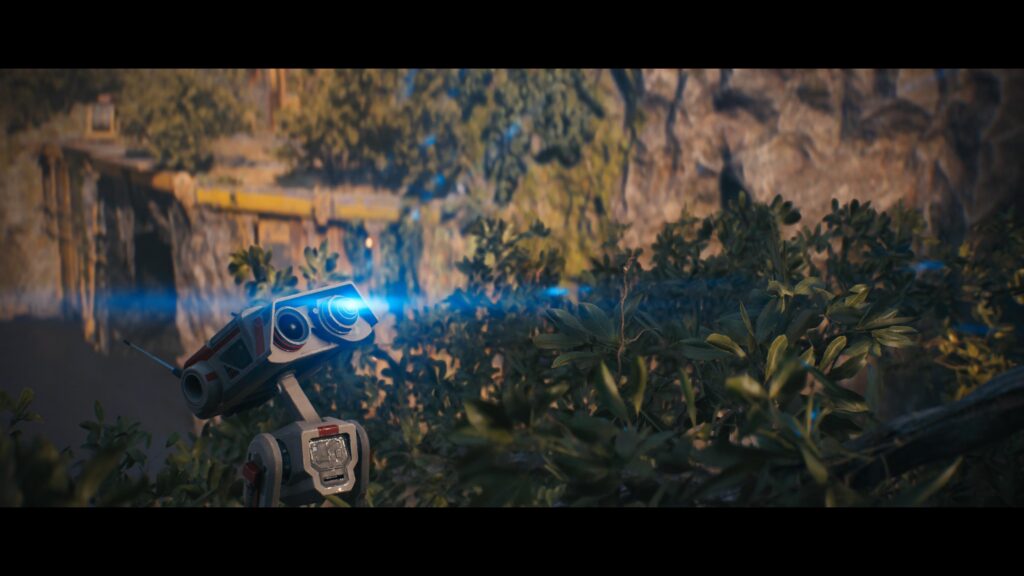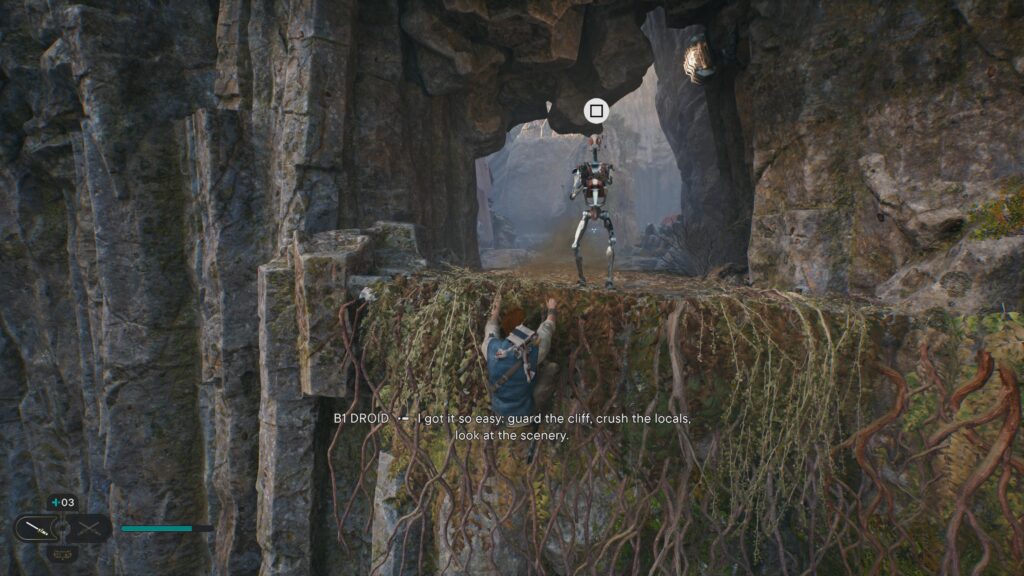You'll love it if:
- You're really into Star Wars
- You enjoy soulslikes and punishing combat
- Platformers are your bread and butter
Not for you if:
- Stable performance is very important for you
- You're not a fan of bugs in games
A long time ago in a galaxy far, far away there was a very successful video game called Jedi: Fallen Order, that managed to revitalize the gaming community’s interest in Star Wars narrative-driven games, a long time after Star Wars: The Force Awakens. Cal Kestis and Co. managed to captivate audiences and critics and herald a revolution in gaming when it comes to the Star Wars IP, as it looks like that everyone is making a Star Wars story-driven game now. Even so, the internet seemed to only care about the sequel to Fallen Order, named Jedi: Survivor. Respawn had won over the hearts of gamers and Star Wars fans alike, and it’s clear that the praise was well deserved. But how does the sequel stack up to the original? Did Respawn manage to deliver on the expectations?
First off, let’s just state that the collective opinion about EA is slowly starting to shift. After years upon years of mediocre, or even terrible releases, the so-called “most hated company in America” is presenting a new image. After a wave of well-received releases, like Need for Speed Unbound and Dead Space, gamers are starting to lay back on the criticism a bit. It took a while, but EA seems to finally have finally gotten the message. Let’s take a sigh of relief, and take in the small but much-needed victory in this huge online argument about EA.
However, we have to recognize that this release launched in a rather problematic state on PC. As reviewers on Jedi: Survivor’s Steam page point out, there are still massive performance issues that have not been resolved. Could this be an indication that EA is starting to slip into old habits? I have very good reason to believe that this is not the case. Let’s get right into it:
TL;DR
Despite technical issues, Respawn’s deep understanding of the Star Wars mythos helps Jedi: Survivor find its place amongst the franchise’s best offerings, with brilliant visuals, apt writing, and a deeply entertaining gameplay loop.
All images in the article were taken while testing the PS5 version of Star Wars Jedi: Survivor.
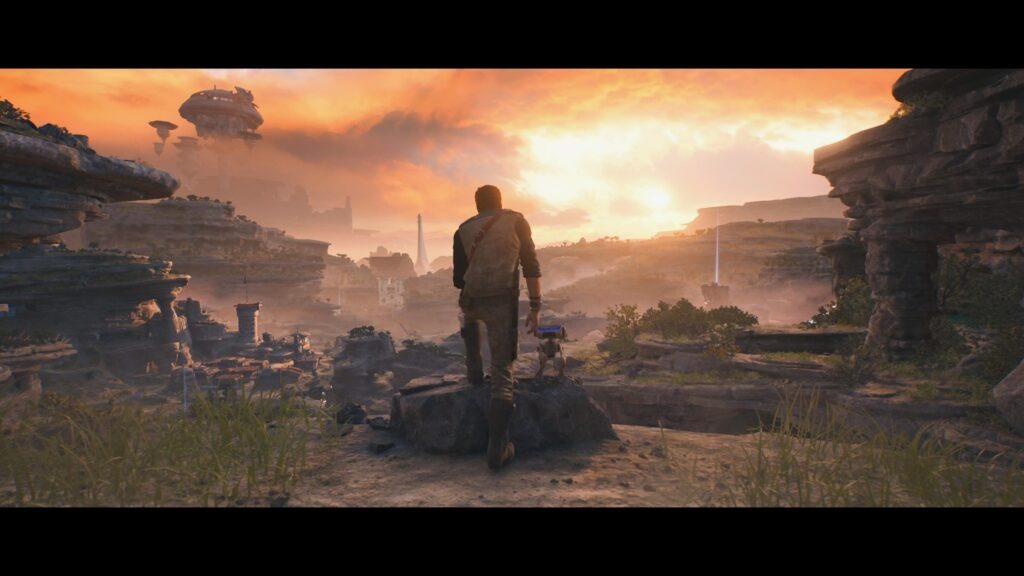
Jedi: Survivor – Presentation
Regardless of our opinion about this game’s performance, there is no doubt that Jedi: Survivor is as blockbuster as a game can be. The production quality is of the highest level, and there are quite a few instances in which this game, dare I say, looks better than the prequel trilogy. But due to the performance issues, it never really gets to reach its full potential. Jedi: Survivor suffers from a serious case of growing pains. Respawn has not managed to fully utilize the horsepower of latest generation consoles and PCs, and that is to the detriment of consumers. But the reality is that the previous game had performance issues as well. Most people played Fallen Order years after its release, when it was added to EA Play and Game Pass, and that’s why it felt so well optimized to most, even on the super weak last-gen hardware.

Breathtaking cinematics
Like I said previously, this game can be a real looker at times. This is especially true during cinematics, where you can really see the work that Respawn put into this game. The detail in skin textures, the character animation, and even the hair. Every little thing chips in to paint a broader, super cinematic picture. The moment a cinematic starts, black bars pop out from the bottom and the top of the screen, telling you that there’s an important story beat coming up. Cinematics are not used too frequently in this game, only in moments when it’s necessary for the story to progress, and that’s what gives them some extra importance.
Overall, the cutscenes feel vastly different to the gameplay, but we’ll get to that later on. The cutscenes try to emulate the vibe of the movies, and if I’m being honest, there are points where Jedi: Survivor feels like it would make for a better movie than some of the latest Star Wars films. It’s got the classic wipe transitions, pompous dialogue, and the direction works wonders in terms of showing off the awe-inspiring, exotic landscapes. The cinematics are one of the better parts of this game.
Another thing that I want to point out is that Jedi: Survivor absolutely nails the visual tone of the Star Wars franchise. Being a licensed game, and considered part of the Star Wars canon as well, Respawn would need to make sure that Cal Kestis and friends look and feel as if they are a part of the expanded Star Wars universe. And they definitely succeed in that regard. Jedi: Survivor fits perfectly into this space/steampunk space opera visual style. But it’s not simply conforming to an already established style. Jedi: Survivor feels much grittier than the films. Looking at Cal in this game, you can tell he’s been through the wringer. The same goes for the rest of the cast as well, as the story is set in a troubled time period within the lore.
All across the galaxy
The Star Wars mythos has everything to provide for some very interesting backdrops in our heroes’ adventures. Cal Kestis and BD-1 visited quite a few planets in Jedi: Fallen Order. If you liked the concept of traveling across the galaxy in the Mantis in the last game, you’re in for a treat.
Although the number of planets you visit has not increased significantly – we’re up to 6 planets from 4 – the scale of the planets you get to visit is a whole different story. The planets open up as you progress through the story, and exploration is heavily encouraged so you get to soak in the sights. There is a huge diversity in scenery, honestly. Even if you’re not into the gameplay mechanics or even the story, Jedi: Survivor can provide enough entertainment through the places you get to visit while playing. One moment you’re in a bustling, high-tech metropolis, the next you’re in a mountainous region that leads into a jungle, and then you get to visit a desert plagued by sandstorms. But not everything is just handed to you right off the get-go. You have to work to see all that a planet has to offer. Much like the real world, places are not single-dimensional and they open up to reveal their true secrets as you progress through the story.
The Mantis is also a big part of the visual landscape, once again. It might not be the Cal Kestis HQ this time around, but it is your main means of inter-galactic transport and your safe place when you’re away from Koboh. That means you get that Cal and the other characters get to spend some meaningful time in it. Although it doesn’t retain the importance it had in Fallen Order, it’s still just as you remember it and filled with emotions.
Performance not even coming close to a Landspeeder
Oof, now for the difficult part. Jedi: Survivor leaves a lot to be desired in terms of performance even on console. There are two graphical modes to choose from, as per usual, Quality and Performance. The problem is, that none of them offer a stable experience. Quality mode makes the game look absolutely phenomenal, rendering everything in (about) 4K resolution, targeting the 30fps mark. Problem is, you’ll occasionally be dropping in mid-20s in busy places, and when a lot of enemies are on the screen. Performance mode on the other hand, renders the game at 2K resolution and aims for a stable 60fps, but honestly, it gets nowhere close to that. In my experience, the game was running at 50-45fps most of the time, although it was more stable overall than playing in Quality mode.
I expect to see performance improve over the coming weeks or months. However, there are a lot of technical issues that are still a little jarring to see in a AAA game. For example, it wasn’t rare for the dialogue to not match the character’s mouth movement. It felt like I was watching a dubbed show. Also, some animations that are rendered in-engine, during gameplay, were too clunky for my liking. We also encountered a ton of bugs during testing. Cal would often snap into ledges or T-pose on railings, he would often fail to grab his lightsaber from the workbench and would end up fighting with an invisible lightsaber, or BD-1 would completely disappear at random times. Like I said, growing pains. Little annoyances here and there but nothing game-breaking in terms of bugs.
On the other hand, we have to give praise where it’s due. The UI in this game is great. Single-player games like this one always do really well with UI elements designed for big screens. I loved how the UI is super minimal when playing, but can get really impressive once you get into the menus, and makes navigating an enjoyable experience. The FOV slider was a great addition that I didn’t expect to see here, but is also a feature that makes the game experience more memorable and works wonders for immersion. The only UI element that left me with mixed feelings has got to be the map, which just like in Fallen Order, opens up as a projection in front of Cal’s model. Not my cup of tea, but at least it does have some new features, like an outline of your pathing so you don’t get lost as easily.

Jedi: Survivor – Story
The Jedi series of games are set in a very interesting time period in terms of the Star Wars canon. Jedi: Fallen Order takes place in the Imperial Era, a few years after the Clone Wars. Jedi: Survivor places itself five years after the events of Fallen Order. That would mean that the events of the game happen around the same time period as the events of the Obi Wan Kenobi show on Disney+. It’s important to note that both games are considered canon and they fit into the broader Star Wars narrative.
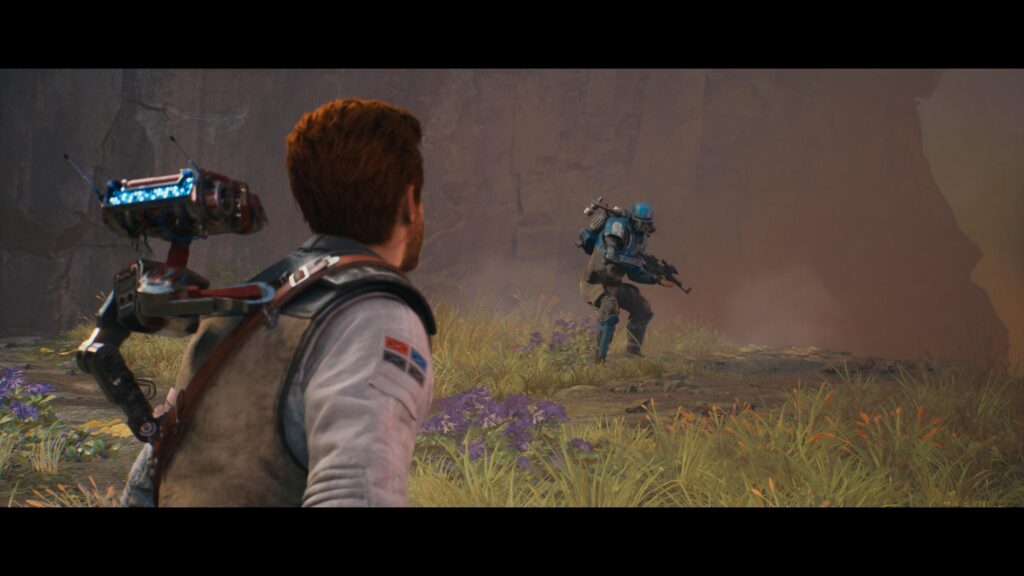
Spearheading a rebellion
The story starts with Cal Kestis taken captive by a group of bounty hunters, heading to Coruscant so they can turn him in and collect the bounty on his head. The beginning of the story really takes you by surprise when it’s revealed that Cal Kestis had planned this all along and it was all an elaborate ploy in order to get close to a Senator of the Imperial Council and get his hands on Imperial maps and secrets and feed them to the Rebels. On their way out of Coruscant, they are confronted by the Ninth Sister, and Cal’s crew suffers from heavy casualties, and the Mantis is hit pretty hard by the Imperial forces.
Having just barely survived the mission, Cal and BD-1 rendezvous with Bode, the newest member of their crew on Koboh, a planet on the Outer Rim, which Greez has made his home. Shortly after arriving on the planet, Cal and BD-1 reunite with Greez that tells them where to look for parts to repair the Mantis. While searching for parts, Cal stumbles upon Zee, a droid from the High Republic Era that served one of the last Jedi masters, and talked about Tanalorr, a planet hidden within a planet, away from the prying eyes of the Empire. The Rebels had been looking for a safe place to settle into and plan how to get back at the Empire, without constantly living in fear of the Imperial forces. Cal immediately understood that Tanalorr was something worth investigating.
While searching for Tanalorr, Cal came across echoes (visions) from Dagan Gera, one of the Jedi masters in the High Republic era, who was actually the one that first discovered Tanalorr and pitched it to the Republic as a place to train padawans and help them get acquainted with the Force. Retracing Gera’s footsteps, Cal quickly finds out that even after all these years, he wasn’t dead. Cal tried to bring him up to speed with everything, but Gera was in no mood to cooperate and instead chose to clash sabers with Cal. After being rescued by a gang of raiders, Dagan Gera states that he is also looking for the entrance to Tanalorr, just like Cal is, but in order to satisfy his own, nefarious objectives.
A grittier tale
I can seriously appreciate stories that “grow up” alongside their target audience. Fallen Order told a rather straightforward story, with a lot of drama, companionship and sweet moments sprinkled throughout. It would not be unfair to say that Cal becoming a Jedi at the end of it was akin to a coming-of-age story. In Jedi: Survivor, Cal is already a fully grown adult. And you can tell that the themes are more serious this time around.
Cal needs to come to terms with letting go of some of his closest companions and embrace them being happy while doing something completely different than him. Reuniting with old friends and accepting that people change and sometimes grow apart. He is now in a place to understand that some sacrifices are necessary for the cause the Rebels are fighting for, and some people are just beyond saving. This game paints a very different picture of Cal Kestis, from the nervous yet ambitious teenager in whose boots we found ourselves in the first game. This time he’s witty, dependable and resourceful. Respawn has basically reinvented the character.
The rest of the much-beloved cast from Fallen Order is also back, but this time they are all off doing their own thing – except of course for BD-1, who remains at the side (or on the shoulder) of Cal Kestis. I won’t go into detail about their new endeavors, since I belive that just like its predecessor, Jedi: Survivor will also be a game that most people will play long after its release. However, I have to say that aside from Bode and Zee, I found the new characters that were introduced to be sort of underwhelming in comparison with the returning cast.
Jedi: Survivor – Gameplay
The gameplay is the strongest aspect of Jedi: Survivor. Putting the missteps in terms of performance aside, this is still a very good game with a deeply enjoyable core gameplay loop. If you enjoy soulslike games and like discovering large open worlds, you will find plenty to like here. New features have been introduced, and although the community’s complaints about Fallen Order’s issues have not been addressed directly, Jedi: Survivor seems to offer better pacing and harder puzzles for side-content.
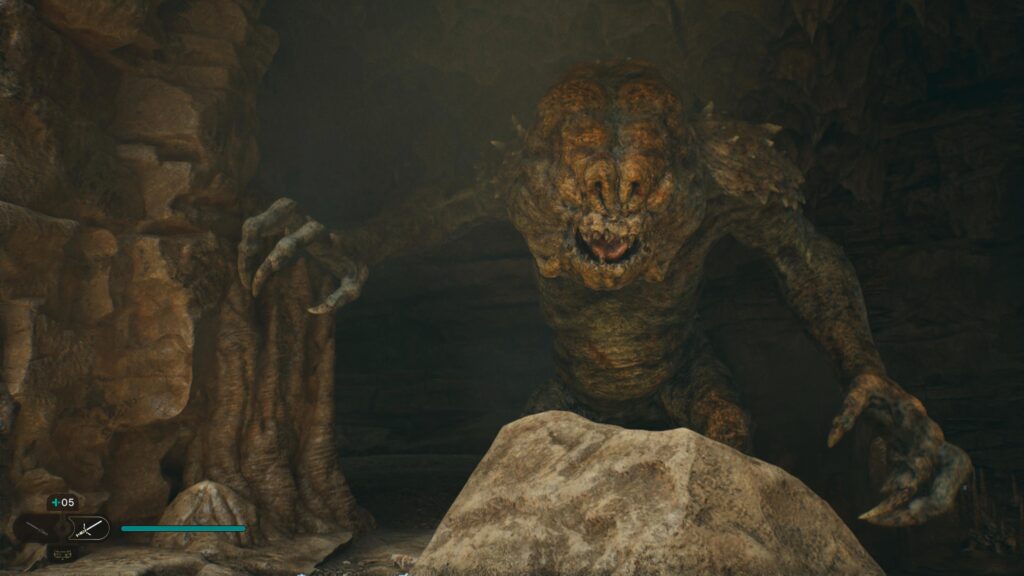
Cal the explorer
Jedi: Survivor may not technically be an open-world game, but it’s as close to an open-world game as it gets. Similar to Fallen Order, you travel from planet to planet in order to meet up with friends and investigate about Tanalorr. You will have to visit each planet multiple times, as you unlock more traversal options like the Ascension Cable (which you actually get very early on), that will help you reach new places. The idea here is that although the planets themselves start feeling familiar after a certain point, there’s always something new to see.
I hope you’re fans of platforming because you will be doing a lot of that. Climbing on walls or running across them, solving puzzles using the Force to get past roadblocks, and unlocking shortcuts that will help you circle back to the beginning of a level – all of that are still a huge chunk of the Jedi: Survivor experience. There are still a ton of secrets to find by exploring around each level, although most of the rewards are either tokens that you can redeem on different vendors in exchange for cosmetics, or cosmetics themselves. Sadly, the mini-bosses and secret bosses don’t feel as rewarding as in the first game as well.
You will travel around these vast distances on foot, and that is why unlocking shortcuts where available is a good idea. The levels usually circle back to their beginning, so even if you missed a few, there shouldn’t be a problem. But, this game also introduces mounts that will help you get through parts of each level that Cal is unable to on his own. There are various animals on the planets you visit, and Cal can use the Force to tame them and either ride them or use them as a glider. That is a great idea, as it also helps show off the Star Wars mythos and makes the universe feel better connected to the actual lore.
Combat is more punishing than ever
The combat in this game is very fun, and it can be very realistic in the sense that you can kill off enemies in a couple of hits, as it should be. But for the most part, they can do the same to you. This is a soulslike, so as much rewarding as combat can be, it can be just as punishing if you’re not careful. This isn’t a hack-and-slash, so you have to be careful and plan out every encounter. Cal might be stronger but is he stronger than a group of stormtroopers without planning ahead? There is still a stamina bar in this game, and although BD-1 is still here to provide you with stims, it’s only after you have explored enough to increase your stim capsules that you will be able to take on large amounts of enemies head-on. You will die a lot in this game, so if getting killed frequently grinds your gears, you might want to steer clear.
In terms of actual fighting, there is some variety to be enjoyed here, as more stances have been added, and you’re no longer constrained to using a single, a double or two lightsabers. More importantly, you can use a blaster along with your lightsaber this time around, which is very interesting. You run out of ammo relatively quickly and you had to defeat enemies for your ammo to replenish, so you can’t rely on just using your blaster. There is also a new one called crossguard, in which Cal carries his saber around like it’s a claymore (dua-handed), which is definitely the most powerful, but also the slowest of the bunch. You can change stances at meditation points and you can only have two stances equipped at a time. You can switch between equipped stances on the fly.
Speaking of meditation points, these are back in full force. You can now use them for fast travel aside from saving the game and spending skill points. Thankfully, there are still no levels in this game, so you only have to worry about gathering enough skill points to unlock the ability of your liking – even though this is kind of the same process as if there was a leveling system. There are 3 categories of skills: Survival, Lightsaber, and the Force – all rather self-explanatory. You can level up each lightsaber stance and Force ability individually, which makes upgrades seem meaningful, and you can customize your build exactly to your liking, without having to spend your skill points on abilities that you will not use.

High Imperial drip
Customization was a big thing in Fallen Order, and the same is true for Jedi: Survivor. You can still completely customize the appearance of Cal, BD-1, and your lightsaber to your liking. This time around, you have even more freedom to create your custom designs, as you can choose between different materials for BD-1 and the lightsaber or pattern designs for Cal’s clothing. You also get to customize Cal’s full outfit, deciding on each piece of clothing individually, which makes it so you can pull off some crazy combinations.
Instead of having to explore every nook and cranny of each level to get cosmetics, you can now buy them from vendors in exchange for certain tokes that you can get through… exploring. Yeah, it’s not very rewarding. And what’s even worse is the fact that every section of a planet gives you access to only one set of cosmetics. So, yeah, you have to take your time exploring if you want to be dressed up to the nines. But hey, at least they’re not selling them as microtransactions.
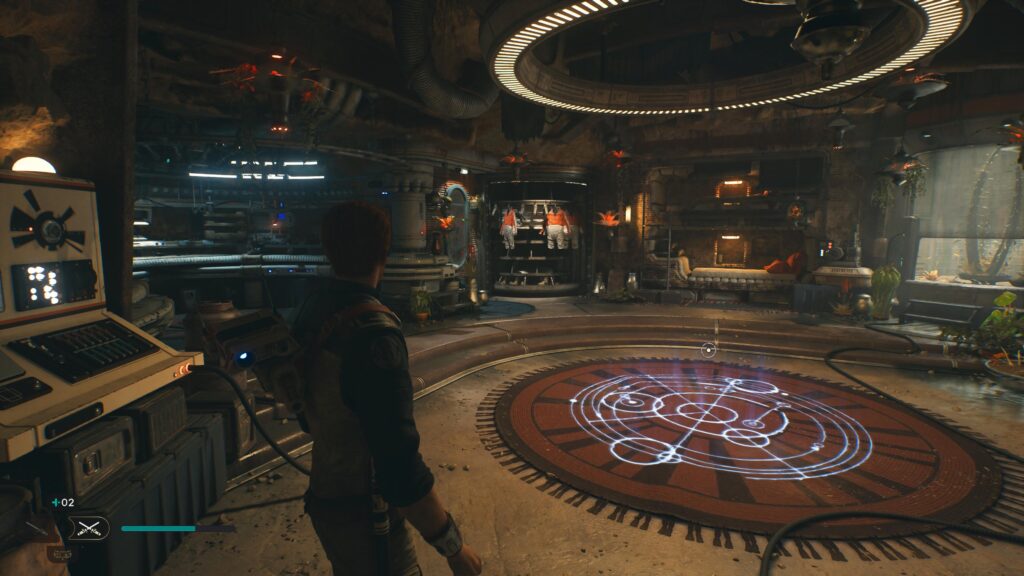
Jedi: Survivor – Verdict
While it is true that Star Wars Jedi: Survivopr launched in a really rough state, that is only true in terms of performance. Despite its lack of overall stability, which should be easily improved with post-launch patches, Respawn has come up with a really entertaining package that provides stunning presentation, entertaining gameplay, and a story that easily finds its place within the Star Wars mythos. The studio has put a lot of love and time into this game, and you can tell by how detailed everything is. Although there is still room for improvement, especially in the technical aspect, this game is by no means unfinished.
If you liked the first game, then you’re going to love the sequel. Respawn understood what made the first game so successful, and they just delivered a similar experience with slight improvements. You get to see beloved characters like Cal, BD, Cere, and Merin once again, but now they’re much different than you remember and you get to discover every one of them from the beginning. Doesn’t get more “comfort game” than this.
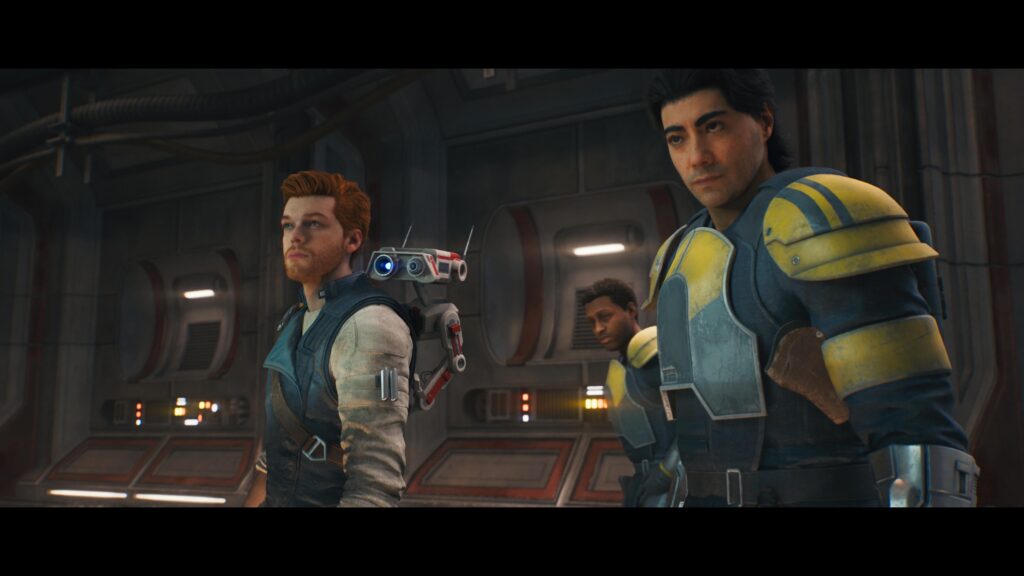
We would like to thank Bandai Namco EU for providing the review copy we used.
